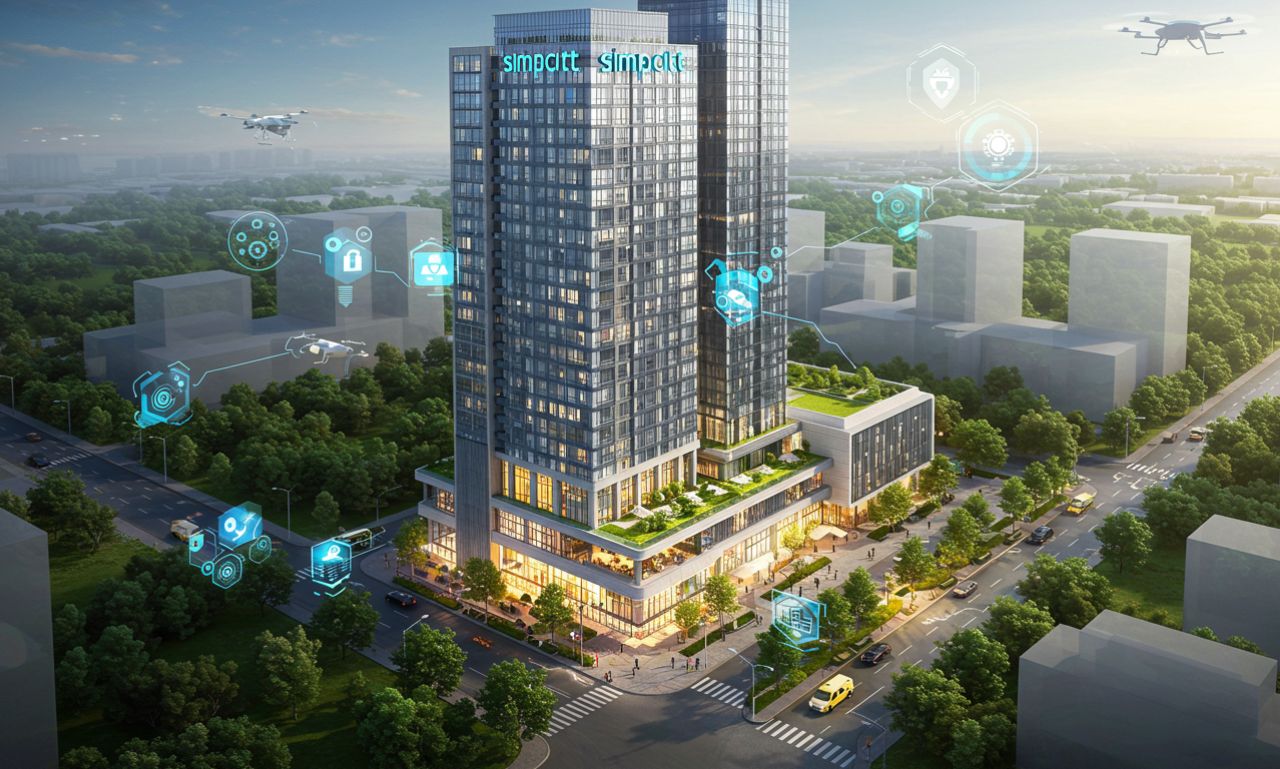Simpcitt smart urban living represents a bold new direction for modern cities. It blends cutting-edge technology, sustainable design, and people-centric planning to create urban environments that are not only more efficient but also more enjoyable to live in. By combining data-driven infrastructure with eco-friendly solutions, Simpcitt aims to address the most pressing challenges of urbanization while enhancing quality of life.
The rise of mega-cities and rapid urban growth has brought significant strain on resources, transportation, and housing. Simpcitt addresses these issues by leveraging advanced city management systems, integrated mobility networks, and community-oriented designs. This combination ensures that the future of urban living is both smart and sustainable.
The Vision Behind Simpcitt Smart Urban Living
At its core, Simpcitt smart urban living is about creating cities that think, adapt, and respond to their residents. It’s a vision of a connected urban ecosystem where every element—from streetlights to public transit—communicates to provide a seamless living experience.
Key aspects of this vision include:
-
Sustainability as a default – Green building standards, renewable energy integration, and waste reduction strategies are non-negotiable features.
-
Integrated mobility – Smart transportation systems, including electric buses, autonomous shuttles, and bike-sharing networks, make commuting easy and eco-friendly.
-
Data-driven governance – Real-time analytics allow city managers to monitor resources, predict issues, and respond proactively.
This holistic approach ensures that urban development benefits the environment, the economy, and the people.
Technology Driving Simpcitt Smart Urban Living
Technology is the backbone of Simpcitt’s model. Through the use of IoT (Internet of Things), AI, and advanced data analytics, cities become more efficient and adaptive.
-
Smart grids ensure optimal energy distribution while minimizing waste.
-
IoT sensors monitor traffic flow, air quality, and infrastructure health.
-
AI-powered decision systems predict peak demand for services and adjust accordingly.
By integrating these technologies, Simpcitt enables cities to reduce energy consumption, cut costs, and improve public safety. For example, intelligent streetlights can dim when areas are empty, saving electricity while still providing security.
Sustainable Infrastructure in Simpcitt Smart Urban Living
Sustainability is a cornerstone of Simpcitt smart urban living. The platform emphasizes infrastructure that works in harmony with the environment.
This includes:
-
Green rooftops and walls to reduce heat and improve air quality.
-
Rainwater harvesting systems for irrigation and non-potable uses.
-
Solar panels and wind turbines integrated into urban layouts.
Such innovations reduce the carbon footprint while also creating healthier, more pleasant urban environments. Simpcitt’s model makes sustainability not just a policy but a lived experience.
Mobility in Simpcitt Smart Urban Living
Efficient, clean, and accessible transportation is essential in the Simpcitt approach. The focus is on reducing reliance on fossil fuels and minimizing congestion.
Simpcitt’s mobility solutions include:
-
Autonomous electric vehicles for public and shared transportation.
-
Seamless payment systems integrated across all transport modes.
-
Real-time route optimization to reduce travel times and environmental impact.
These systems ensure that movement within the city is fluid, affordable, and environmentally friendly.
Community-Centric Urban Design
While technology and sustainability are vital, Simpcitt smart urban living places equal emphasis on community engagement. Urban design incorporates public spaces, cultural hubs, and recreational areas that encourage social interaction.
Key principles include:
-
Mixed-use developments to reduce commuting needs.
-
Open spaces for events, gatherings, and recreation.
-
Accessibility for people of all ages and abilities.
By designing cities around people instead of just infrastructure, Simpcitt ensures that technology enhances human connection rather than replacing it.
Safety and Security in Simpcitt Smart Urban Living
Security in smart cities must be proactive and adaptable. Simpcitt integrates technology to improve both physical safety and cybersecurity.
-
Smart surveillance systems detect unusual activities without compromising privacy.
-
Automated emergency alerts reach residents instantly during crises.
-
Cybersecurity frameworks protect city infrastructure from digital threats.
The result is a safer, more resilient urban environment that can respond rapidly to both natural and human-made emergencies.
Economic Benefits of Simpcitt Smart Urban Living
Beyond livability, Simpcitt smart urban living brings strong economic potential. Sustainable cities attract businesses, boost tourism, and reduce long-term infrastructure costs.
Economic advantages include:
-
Lower utility expenses from efficient energy systems.
-
Increased job opportunities in green technology and urban management.
-
Enhanced property values due to improved livability.
By aligning environmental goals with economic incentives, Simpcitt ensures urban growth is both profitable and responsible.
Challenges and the Path Forward
While the vision is promising, Simpcitt smart urban living faces challenges. Upfront costs for infrastructure upgrades can be high, and integration across existing systems may be complex. Public acceptance and digital literacy also play a role in the adoption rate.
However, these challenges are not insurmountable. Through phased implementation, stakeholder collaboration, and community education, cities can transition effectively into the Simpcitt model.
Conclusion
Simpcitt smart urban living offers a comprehensive, sustainable, and human-centered approach to city life. By merging technology, ecology, and community, it sets a blueprint for future urban development.
With the right policies, investments, and civic engagement, this model could redefine how cities operate, making them smarter, greener, and more livable for generations to come.
